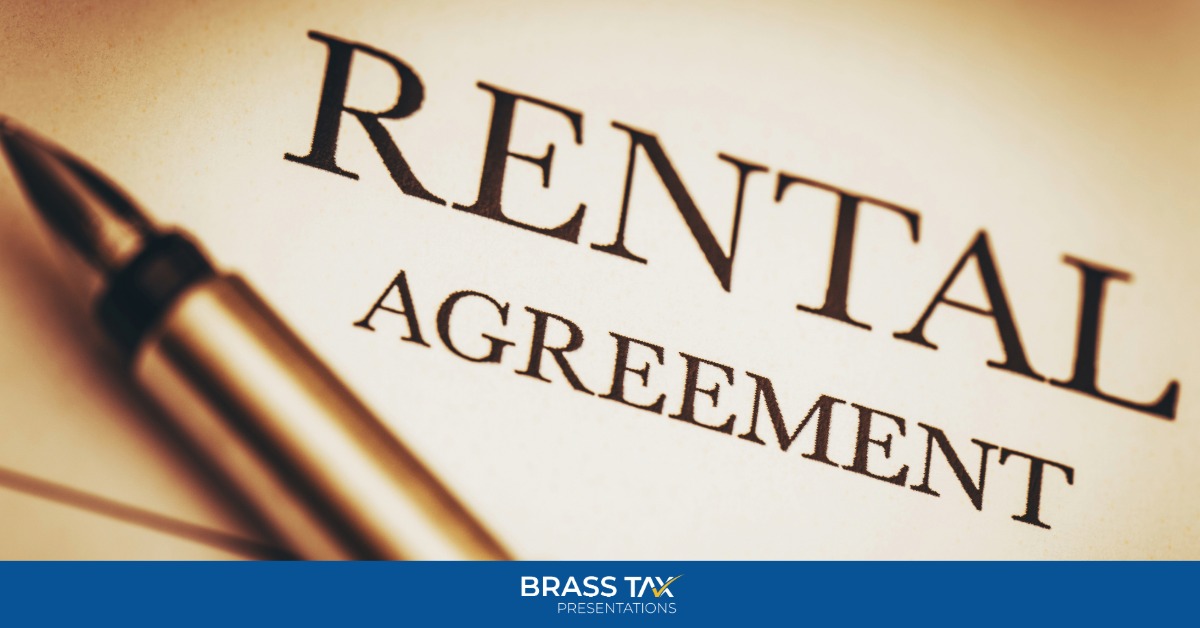Ask Us Anything
Dear Brass Tax Presentations,
I recently purchased the Short-Term Rentals Comprehensive Strategy and have gone through it. However, I was hoping it would address Mid-Term rental situations. Mid-term rentals (longer than 30 days due to HOA rules to prevent short-term rentals) but less than a year and usually furnished are booming more and more. Landlords in this space are very interested in learning how to make Mid-term rentals non-passive. For example, to run it as a hotel with and I’m assuming it would need to go on Sch. C? I’m not sure. Does Brass Tax offer guidance for Mid-Term Rentals? I’ve included a link to a popular Mid-Term Rental YouTube Channel that tries, but I think it fails in addressing this issue with two CPAs as guest speakers. Or you can search for Jesse Vasquez Real Estate Tax “Loopholes” You Can Use On ANY Mid-Term Rental.
Thanks for your help.

From Brass Tax Presentations
I understand that some people get stuck in this mid-term rental situation because their HOA won’t allow stays that are 30 days or less. This will cause problems. In an ideal world when applying these strategies, we are typically trying to escape being classified as a rental for the passive activity limitations. IRS Regulation 1.469-1T provides the guidelines for what activities are “not a rental”. Here are the three big ones that we usually apply:
1. Average period of customer use is 7 days or less
2. Average customer use is 30 days or less and significant personal services are provided on behalf of the owner of the property in connection with making the property available for use by customers
Note that significant personal services are those items that would cause the owner to be subject to SE tax, say, for instance, providing cleaning services during their stay, providing meals or concierge services, etc…
3. Extraordinary personal services are provided on behalf of the owner of the property in connection with making the property available for use by customers
The IRS provides an example of extraordinary personal services in Regulation 1.469-1T(e)(3)(v). They reference a hospital boarding facility where medical and nursing staff are available and also a school’s boarding dormitory because it is incidental to the teaching services provided by that school.
Even if you provide services where you are operating like a hotel, that would fall under item (2) above. Unfortunately, that would still require an average customer use period of 30 days or less which you aren’t going to be able to meet. The only other way is to provide extraordinary personal services under item (3) above where you are a hospital boarding facility or a school dormitory. It’s very unlikely that the client will want to perform those types of services, so in the end, this whole “mid-term rental” terminology just ends up being treated as a regular rental property for tax purposes subject to the passive activity limitations.
If your client decides to provide significant personal services, that can still kick them into having to report the activity on a Schedule C because it would be subject to SE tax (see the citations from the short-term rental course that you took). But just because it goes on Schedule C does not mean that it isn’t a rental, which is subject to the passive activity limitations. You can have an activity that is reported on Schedule C, subject to SE tax, and is still considered passive because it is a rental. This is because the rules for activities subject to SE tax are governed by IRC 1402, and the activities subject to passive activity limits are governed by IRC 469. That causes you to end up with overlap where rentals can be nonpassive and subject to SE tax, passive and subject to SE tax, passive and not subject to SE tax, and nonpassive and not subject to SE tax.
Hopefully this provides some clarity on the issue.
